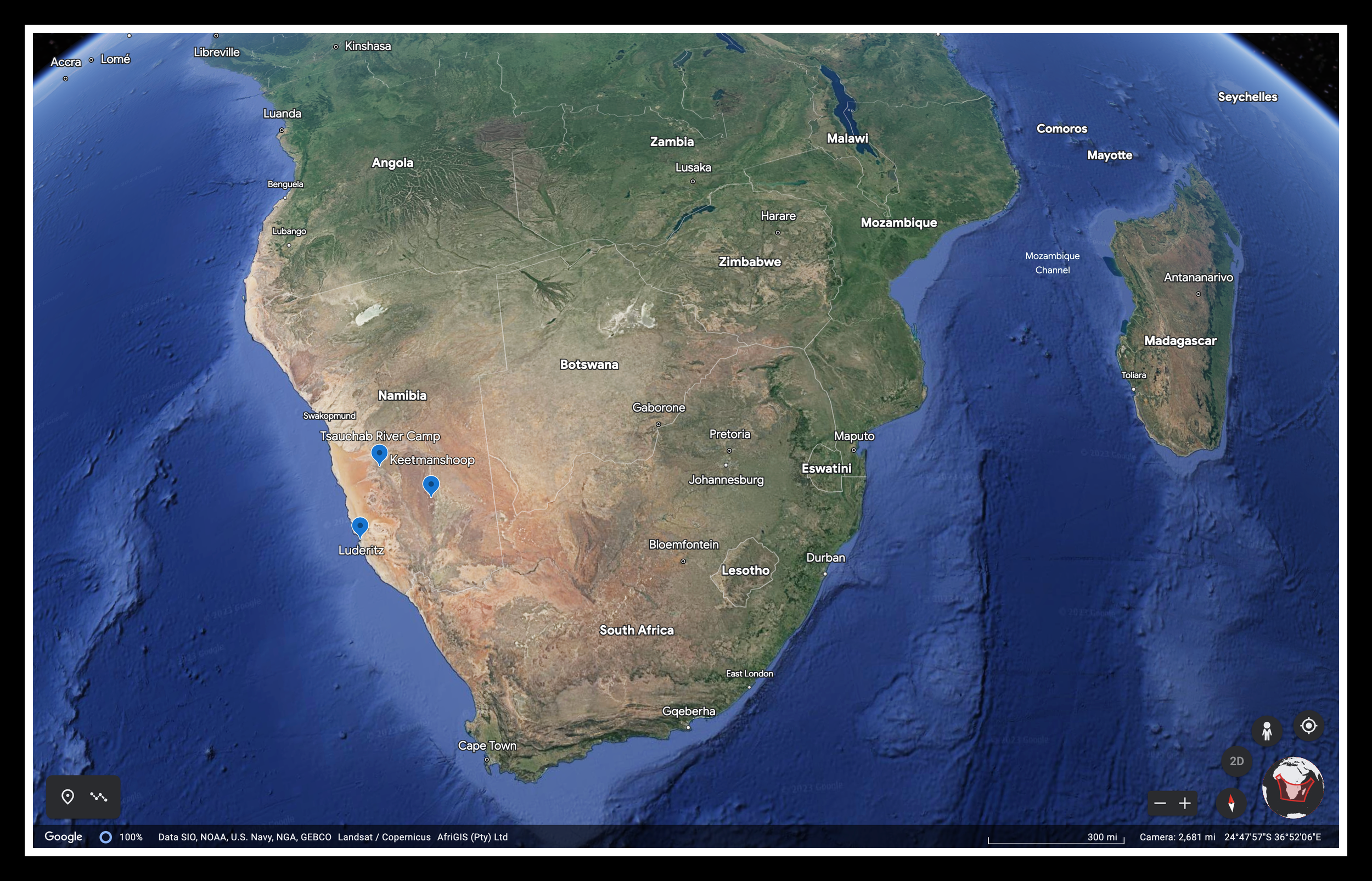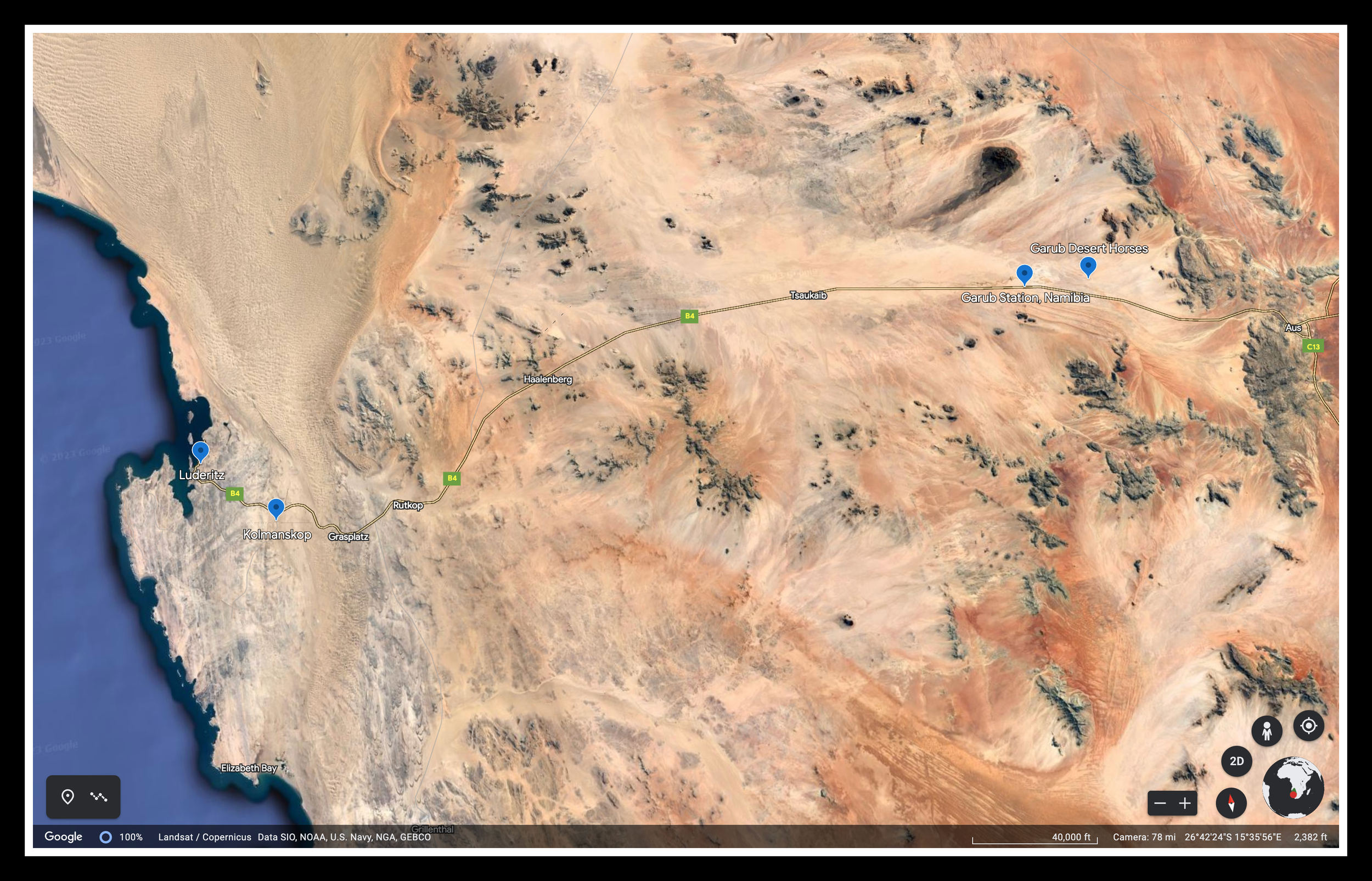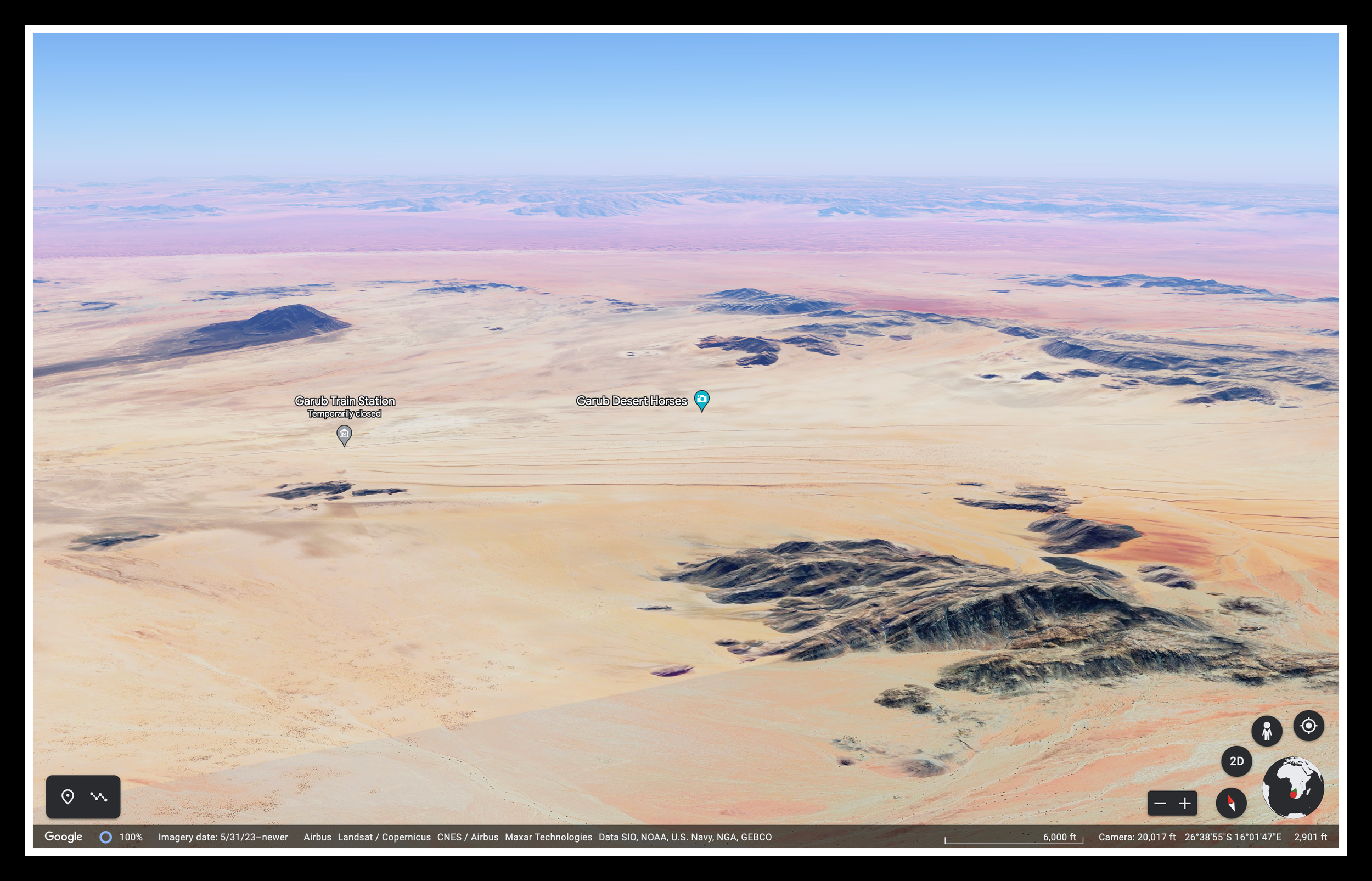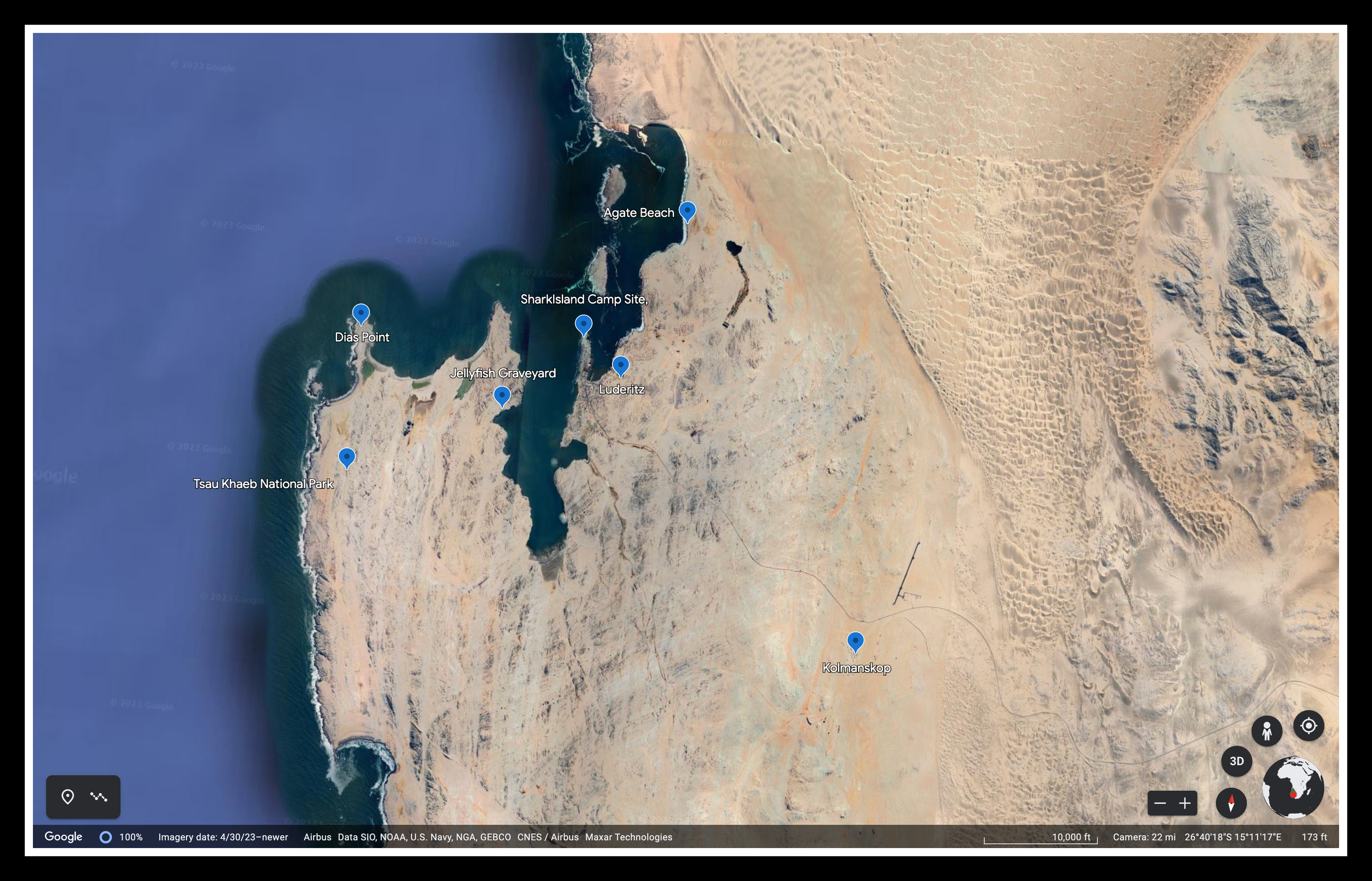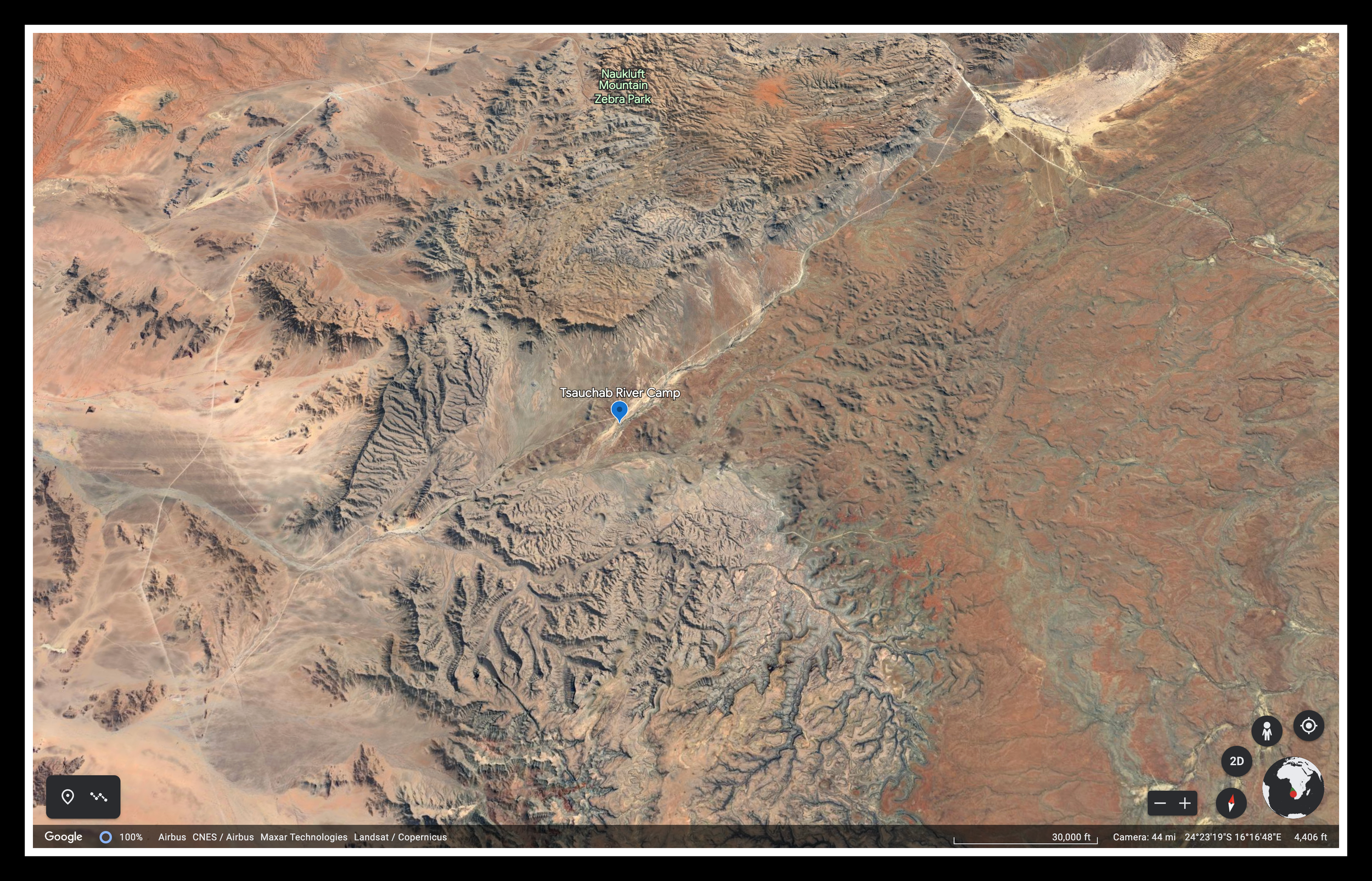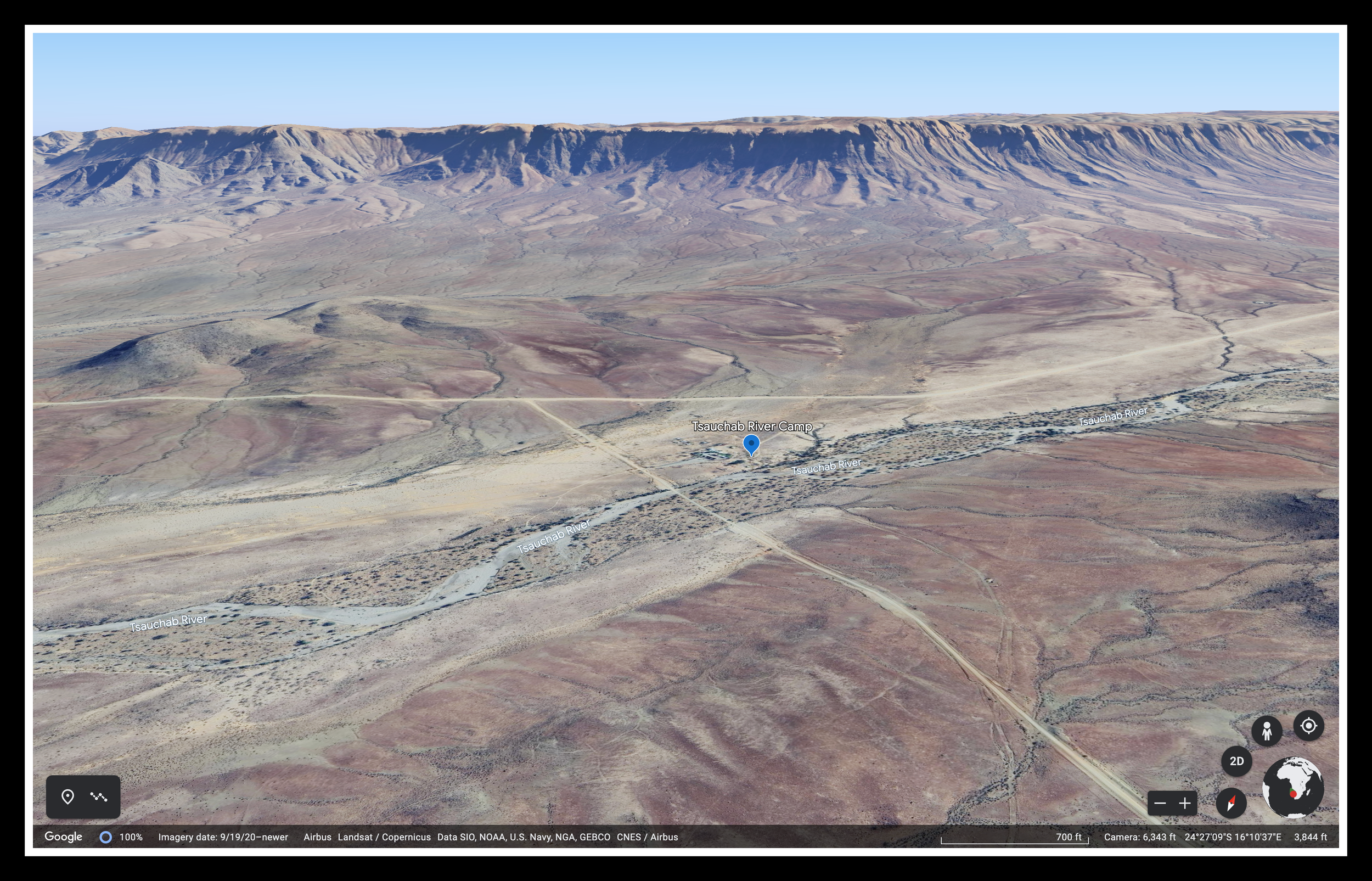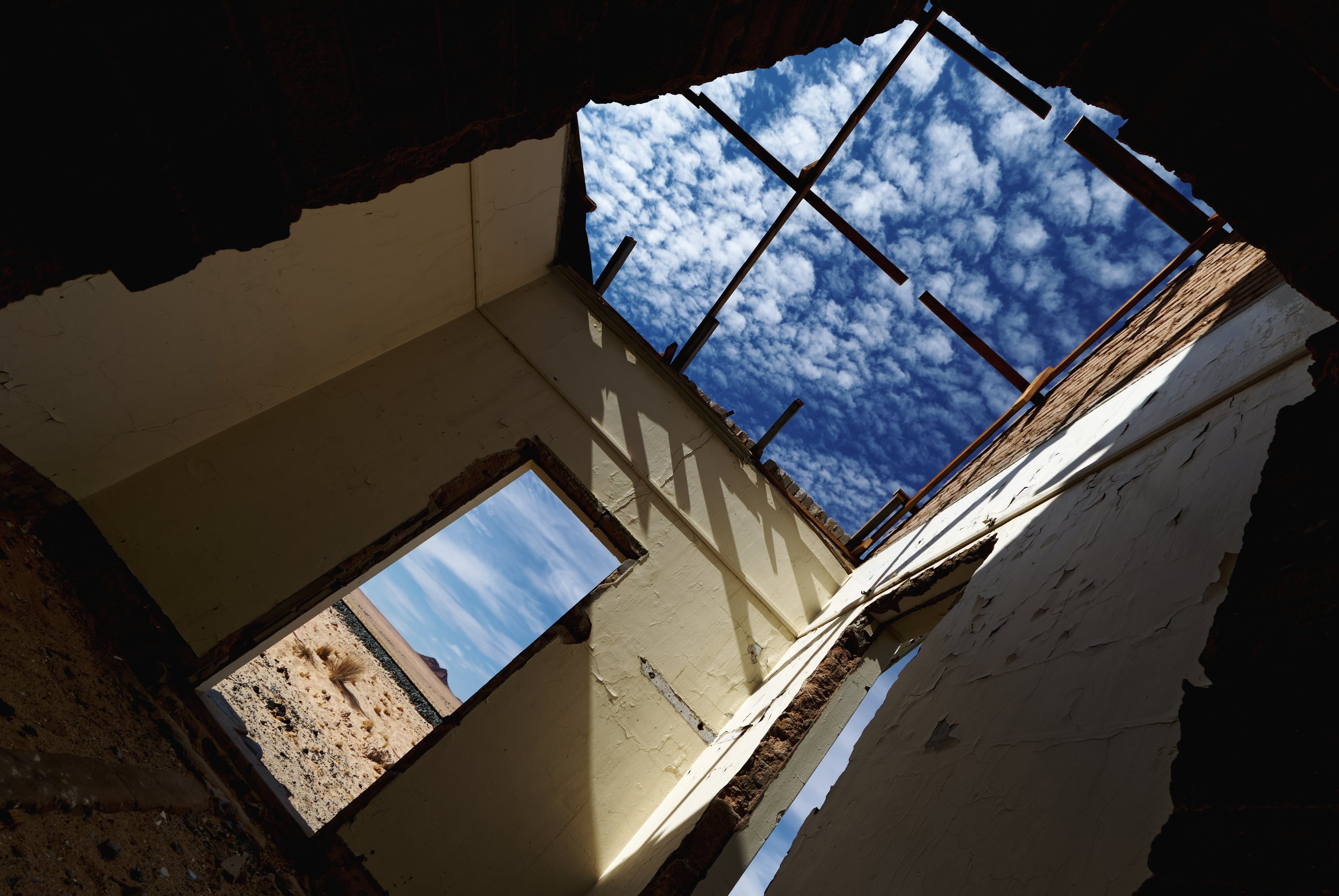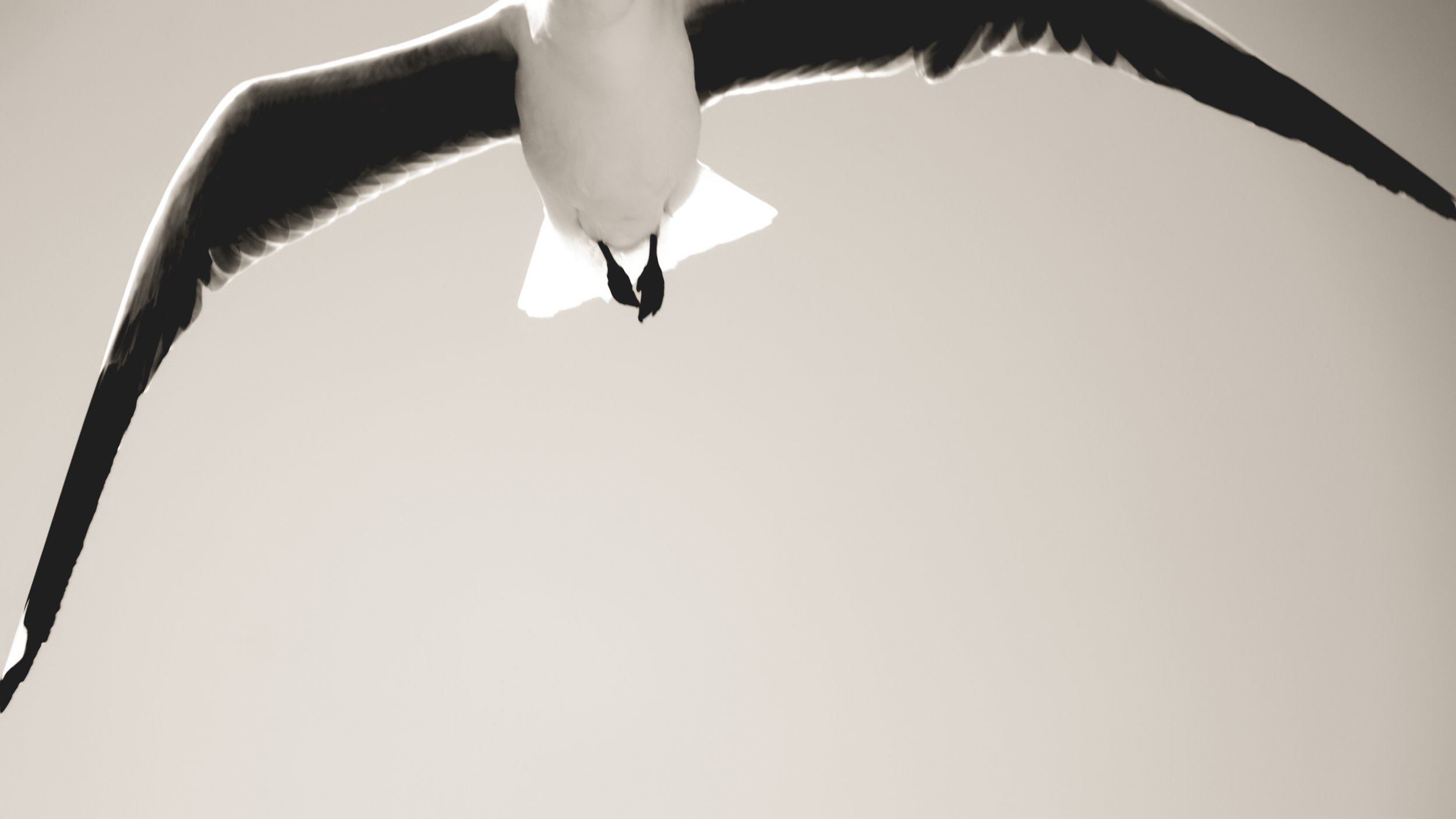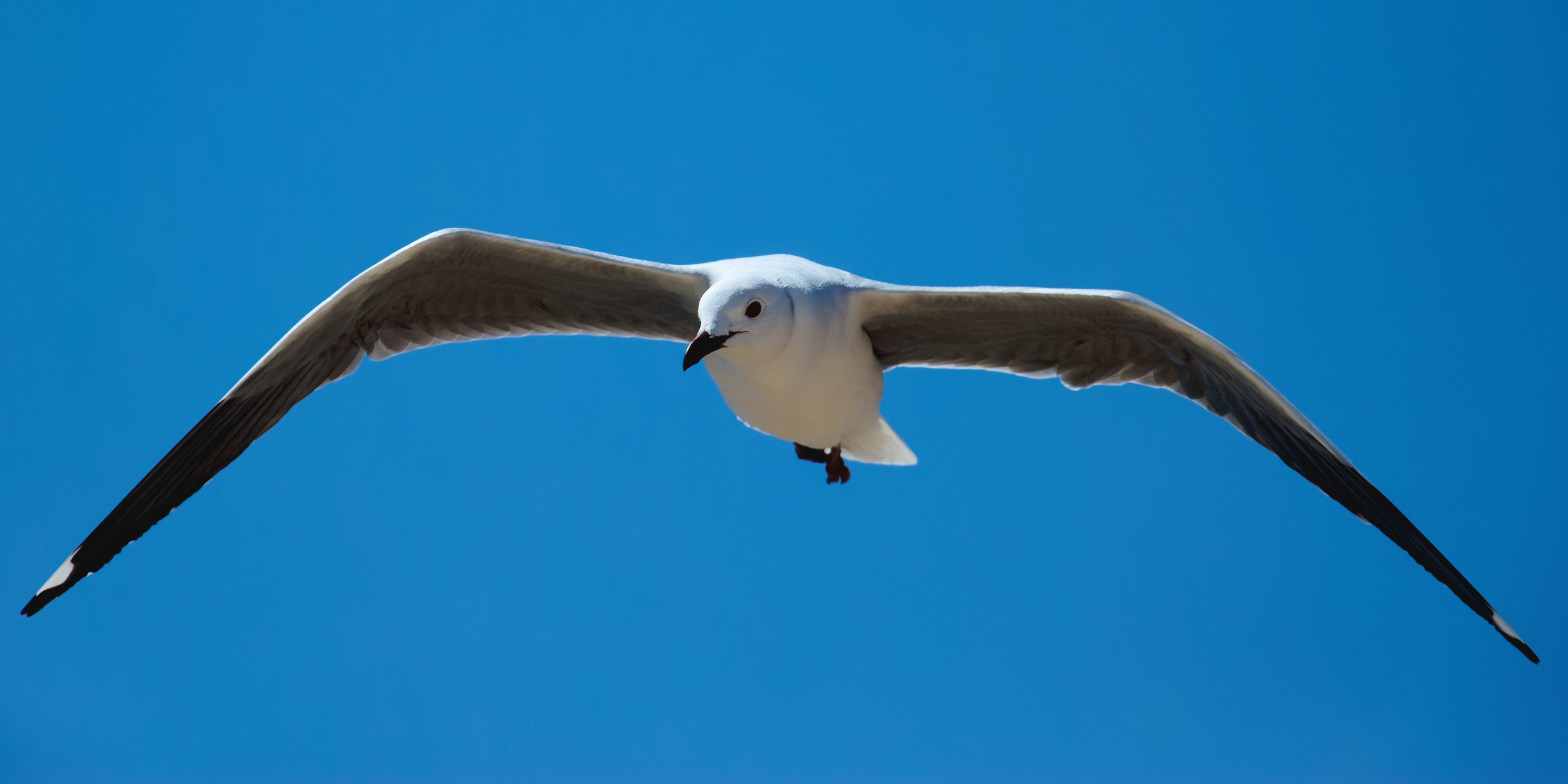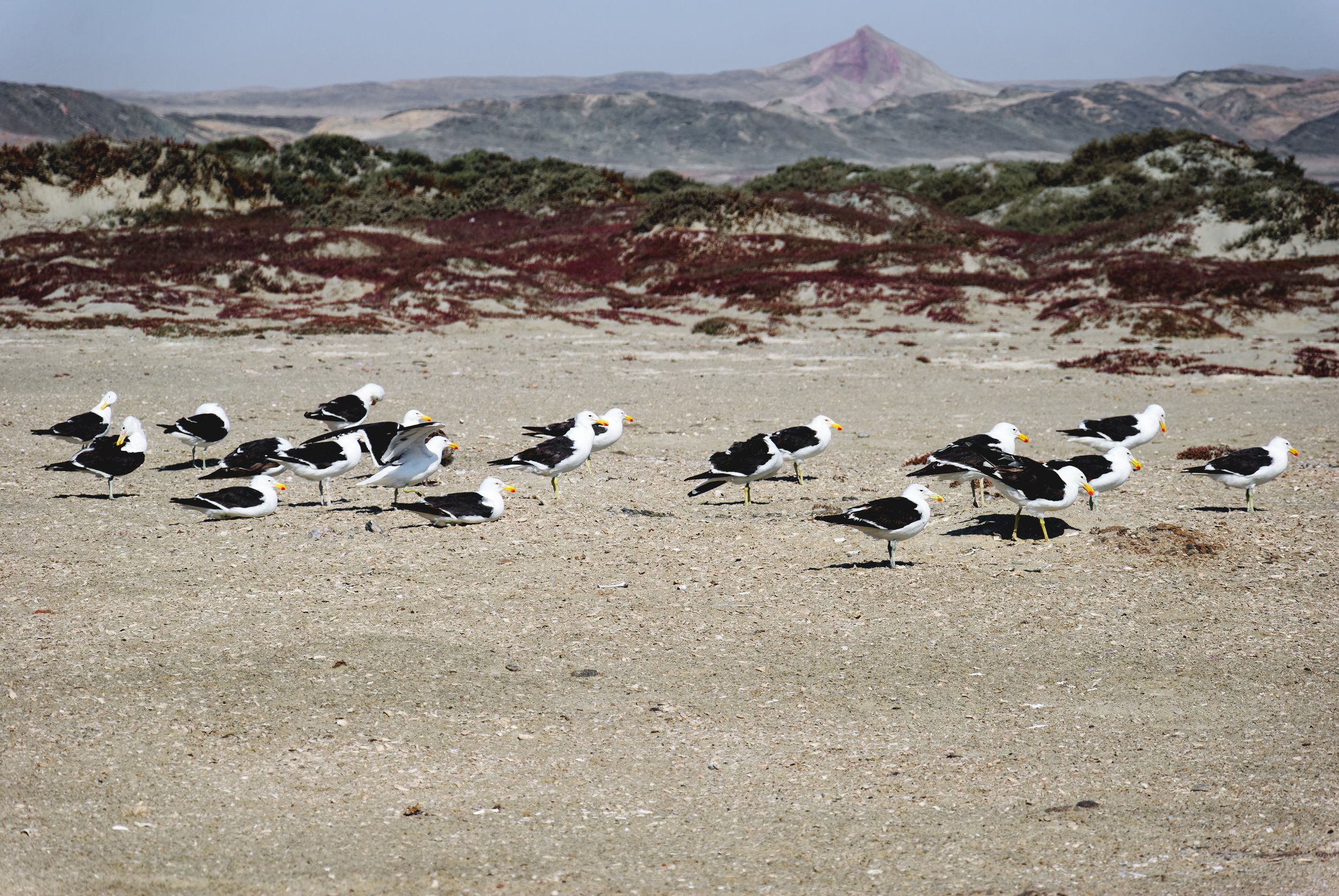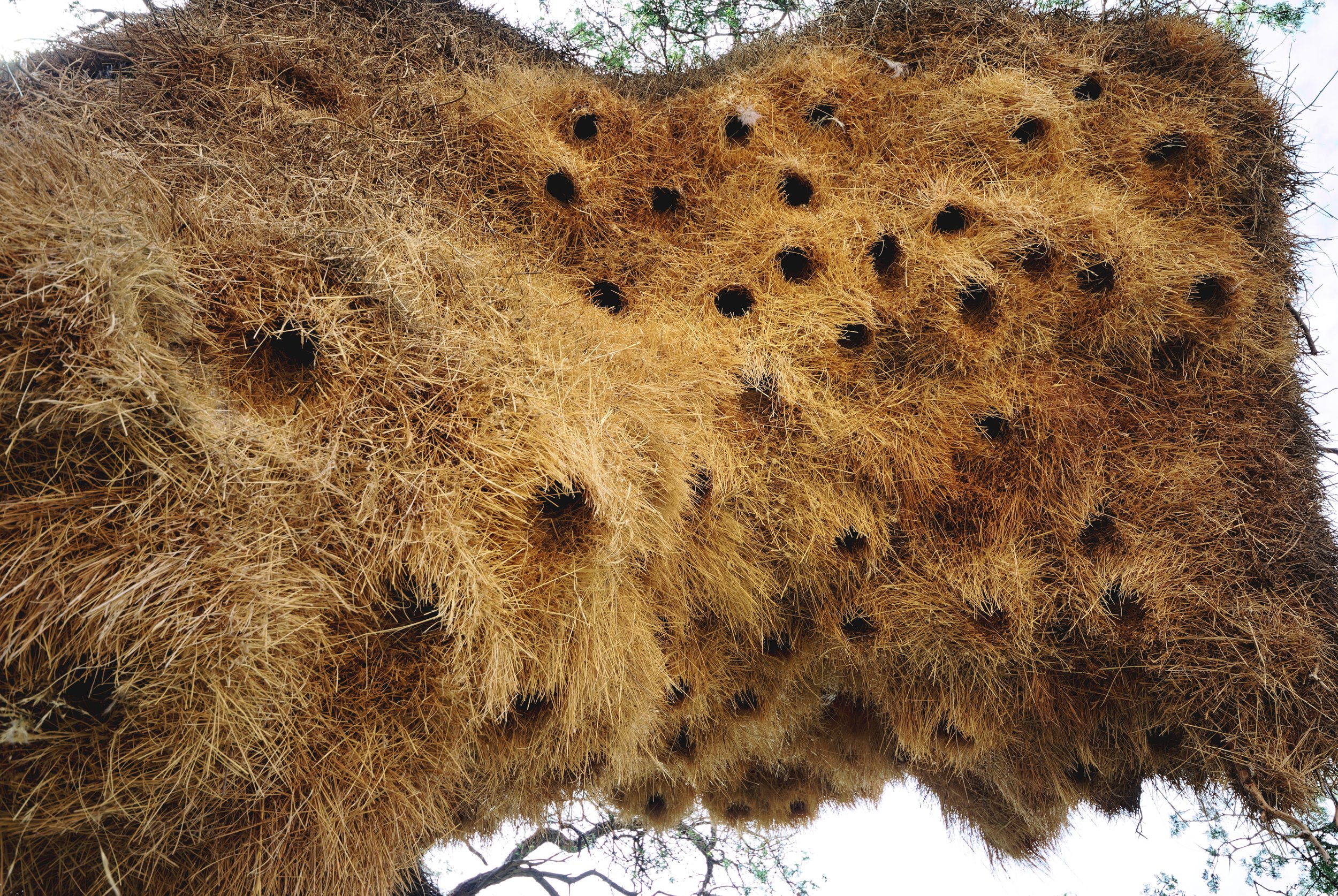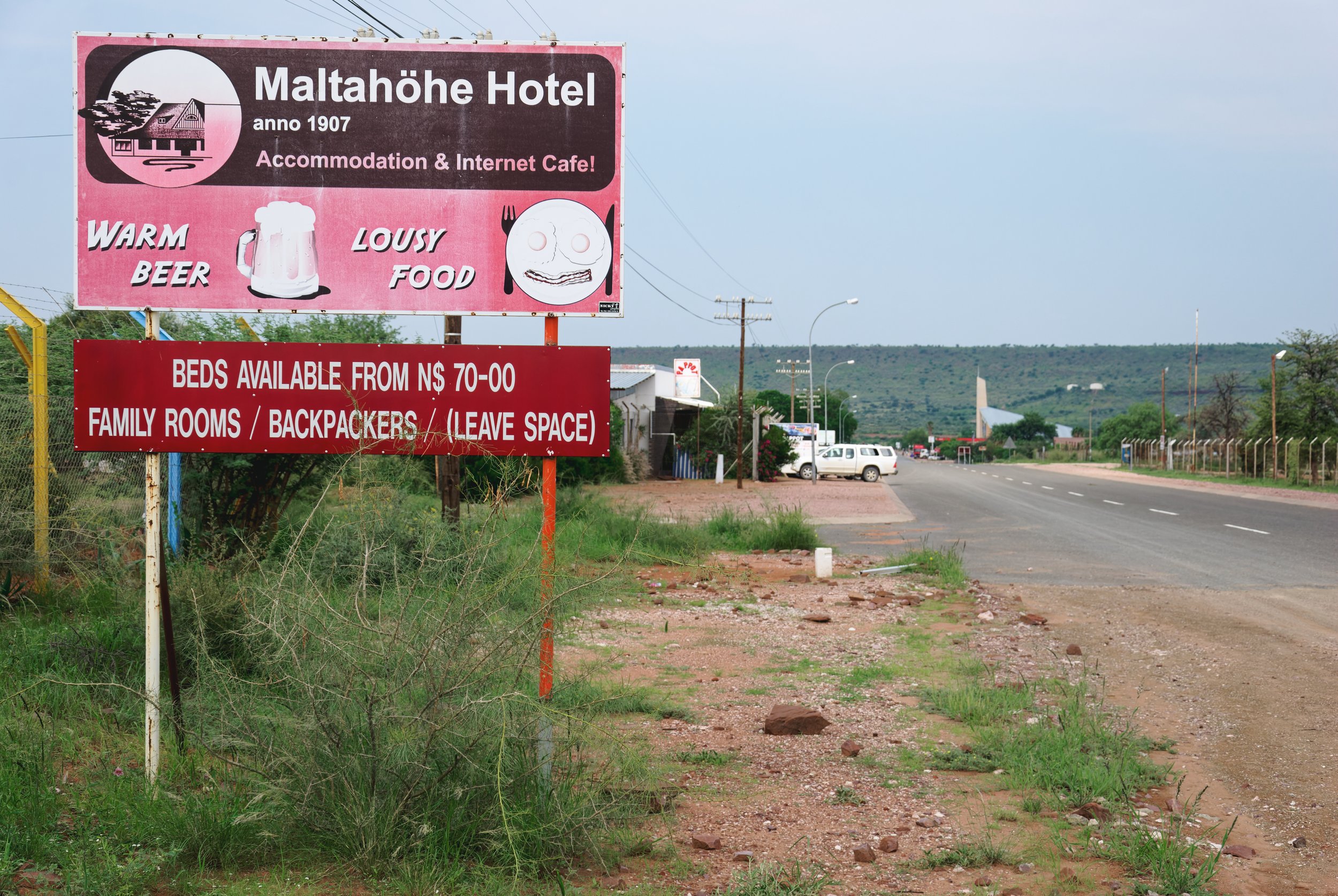209 - Being In Nothingness (Luderitz to Tsauchab River Camp, Namibia)
SHALL I BEAT THAT DECEASED HORSE? We drove from Keetmanshoop to Luderitz and saw, you guessed it, a whole lot of nothing. Nothing was everywhere. Nothing in the air. Nothing in the sand. Nothing on the horizon. A road and decommissioned train tracks cut through a decommissioned landscape. Don’t get me wrong, it was the most interesting nothing I’ve ever seen. As far as nothing goes, it was really something. We stopped along the way to absorb the nothing, even pausing at the derelict Garub train station near the derelict tracks to photograph the dereliction. If you’re the kind of person who believes in nothing, well, Namibia has the ambiance to match your soulless existence. Namibia: The Ultimate Nihilist Retreat. Go.
I wonder if nihilists like wild horses. I think they might. Desert-dwelling equine aberrations. Nothingness connoisseurs… Imagine seeing horses, Namib Desert Horses, in that environment. I had to imagine because we didn’t spot them. There are less than two hundred, so no surprise there. I think it’s better that way. Knowing they exist was enough. Nobody knows their origin story. I like that too.
“The origin of the Namib Desert horse is unclear, though several theories have been put forward. Genetic tests have been performed, although none to date have completely verified their origin. The most likely ancestors of the horses are a mix of riding horses and cavalry horses, many from German breeding programs, released from various farms and camps in the early 20th century, especially during World War I.” Wikipedia.
Luderitz is an anomaly. Not only is it nestled in some of the most inhospitable terrain imaginable, it sports German art nouveau architecture. Juxtapose that between the desert and the Atlantic Coast. It’ll make you wonder where the fuck you are. We chose the Shark Island Campsite to settle, although the “island” became a peninsula when it was connected to the mainland in 1906. Liars.
Setting up a tent can be tricky, as the area is consistently blasted by strong wind, but it’s worth the effort. The view and vibe are excellent, though I didn’t see any sharks… No sharks, no horses… Such bullshit.
“The town was founded in 1883 when Heinrich Vogelsang purchased Angra Pequena and some of the surrounding land on behalf of Adolf Lüderitz, a Hanseat from Bremen in Germany, from the local Nama chief Josef Frederiks II in Bethanie. On 7 August 1884, the German Flag was officially hoisted in Angra Pequena. When Adolf Lüderitz did not return from an expedition to the Orange River in 1886, Angra Pequena was named Lüderitzbucht in his honour. In 1905, German authorities established a concentration camp on Shark Island. The camp, access to which was very restricted, operated between 1905 and 1907 during the Herero Wars. Between 1,000 and 3,000 Africans from the Herero and Nama tribes died here as a result of the tragic conditions of forced labour. Their labour was used for expansion of the city, railway, port and on the farms of white settlers.” Wikipedia.
After setting up camp, we explored Agate Beach north of Luderitz, a patch of sand that felt so forlorn I’d be willing to bet the seabirds were on the verge of suicide. A sign greets you with: NOTICE. THIS BEACH AREA IS SAFE TO THE BEST KNOWLEDGE OF LÜDERITZ TOWN COUNCIL. HOWEVER, ENTERING AND SWIMMING AT THIS BEACH IS AT OWN RISK. It was starting to feel like the opening scene in a horror movie… gulp. Had it not been for the wind and sand lashing our faces, we might’ve patrolled the Cormac McCarthy-esque landscape. Next time.
The area surrounding Luderitz is owned and administered by the Namdeb Diamond Corportation Limited, which means if you wander into a restricted area, they’ll probably blow your fucking head off. The local diamond industry has seen better days, but we weren’t taking any chances. Tourists can visit the Kolmanskop “ghost town” southeast of Luderitz. The town, once a diamond company HQ, was deserted by the 1950s, but it’s been partly restored as a tourist attraction. We drove up to investigate, but it was closed (Sunday). Just as well. It appeared to be as exciting as a haunted house at the state fair. Also, you’re required to buy two permits. One to enter, and another to take photos. Um, no. We felt good about skipping it.
Instead, we explored more of Namibia’s wonderland west of Luderitz on the coast. Again, a 4WD would’ve been mighty handy, especially while negotiating the barren hills of Tsau Khaeb National Park. I narrowly avoided another debacle when I threw the Spark in reverse right before a precipitous decline (precipitous for a Chevy Spark, that is).
After meandering for a spell, we emerged at Dias Point, where you’ll find a fine example of the quintessential lighthouse and a replica of a cross first erected by Bartolomeu Dias on his return from the Cape of Good Hope. Chances are, you’ll also get smashed in the face by a vicious headwind. I felt like a dipshit reporter standing outside in a hurricane to add context and grit to a story. Yes.
Courtesy of Coolcat Productions
After Diaz Point, we lingered between Angra Point and Griffith Bay to gaze across the inlet waters toward Luderitz. A lone flamingo loitering nearby punctuated the mood perfectly. Fun fact: Flamingos are naturally white, not pink. They get their well-known hue from the carotenoid proteins found in the plants and animals they consume. The more you know…
If a single flamingo wasn’t enough to cement the terrain’s air of melancholia, a jellyfish graveyard certainly did so. There were hundreds, if not thousands, of Chrysaora fulgida littering the beach at varying stages of decomposition—a gooey, putrescent delight. I had no clue if such a die-off was natural or otherwise. Turns out, it’s bad, likely a combination of warming oceans and overfishing. Super. I’d be lying if I said I didn’t find it morbidly fascinating. Their florescent crimson complexion gave them an extraterrestrial aura, making me consider the possibility of cosmic, as opposed to oceanic origin.
Climate Change And Human Interference: A Threat To Marine Life
By YOKANY OLIVEIRA — JUNE 25, 2021
It’s been over six months since the world turned to the coast of Namibia where more than 7000 starved cape fur seals were discovered dead. But it’s not just seals that are dying… Read More
Namibia. Wave of Jellyfish not a Healthy Sign
By FINSA reporter — 17 January 2021
It has been noted again that there is an abundance of jellyfish in the Benguela current. In the past week thousands washed up on beaches around Luderitz in Namibia. This is the second time since mid-December 2020. Scientists believe this is a sign that all is not well with the marine ecosystem… Read More
After Luderitz, the goal was Sesriem, a village skirting the edge of the Namib. Again, our eyes were too big for our ambitions. In a typical year, rainfall is manageable. This was not a typical year. Roads normally suitable for a 2WD were sometimes questionable at best. They were decent, but certain areas were washed out a smidge and covered in a layer of not-so-forgiving sand. Eventually, we fought the sand, and the sand won.
The road north was more of that “edge of the earth” desert-ish vibe we’d encountered thus far. It had a unique undercurrent of vitality underscored by an atypical verdancy a la heavy rainfall. In a word: magnificent. The only indications of human presence were the road itself and the seemingly endless fence line running along both sides. One would not be crazy to presume the whole of Namibia to be fenced off, if our experience was any indication.
We were mesmerized by the forlorn expansiveness, all the while crossing our fingers and hoping Sparky had the constitution to surmount any and all obstacles ahead. It performed admirably considering the terrain, but even Superman has his kryptonite. Some areas had become temporary streams in the recent past and had deposited a significant amount of sand in the road. One particularly large deposit proved too much.
I was forced to access my bottomless database of off-roading experience (sarcasm alert) to extricate Sparky from the quagmire. If ensuring the car would never escape the sand under its own power was my aim, my efforts were an overwhelming success. A residence was nearby, and we’d seen a 4WD vehicle enter the premises just before getting stuck. We decided Leslie would go for a stroll while I kept an eye on our stuff and continued my futile efforts. It was either leave her alone by the vehicle while I went for help, or force her to walk solo into foreign territory. That “foreign territory” turned out to be a game farm populated with a variety of dangerous animals. I’m happy to report she reached the house without being trampled by a rhino. Hindsight being what it is, perhaps we should’ve locked up the car and both made our way to the house. I am nothing if not chivalrous… dummy.
Leslie returned with two burly, knaggy Namibian gentlemen and their 4x4. They were kind enough to connect a rope and pull Sparky to freedom. They also gave me sound advice, which amounted to “don’t drive like a fucking pussy” and assured us if we had another problem, we’d likely meet their father up ahead who’d be happy to free us. Thankfully, his services were unnecessary.
Game farm? What the hell is a game farm? As near as I can tell, these farms raise animals for one of three purposes: 1) to sell as exotic food; 2) to supply hunting reserves with fresh game; and 3) to furnish animals for public or private game reserves. My gut told me the Burly Boys were involved in the second option, but I can’t be sure.
We soldiered on through another long day. In the afternoon, we entered yet another isolated Namibian town with that familiar frontier spirit—Maltahohe. There’s not much to it. We took a gander at the Maltahohe Hotel and were thoroughly unimpressed. The owner was friendly in a crotchety “I don’t give a shit if you stay here or not” sort of way. There was another place, but we weren’t feeling it. A tour bus recommended an alternative route to Sesriem through a small settlement fittingly named Solitare. The road was in much better shape.
Bird city courtesy of the Sociable weaver.
We never made it. On the way, we spotted a sign for Tsauchab River Camp located near the Naukluft Mountains, a place we’d read about in the guidebook. It sounded lovely. Was it a good idea to try and get there? Negative. The sun was setting, it was even less of a “main’” route than the one we were on, and the chances of not having to turn around seemed slim. We went for it. Who wouldn’t?
We encountered a considerable number of obstacles. Many areas had been affected by the rains, but somehow we managed our way through each one, even fording a stream or two. Go Sparky, go. Stress levels were elevated, and the voice in the back of my head may have been advocating retreat on more than one occasion.
Perseverance paid off. It’s a remarkable site. Campsites were spread out along the Tsauchab Riverbed, and each had its own shower block, sink, and barbecue facilities. It was sublime and exactly what we needed after a long, stressful day in the “bush.”
The next morning, a curious young Namibian employee showed up to say hello. He was shocked to see our vehicle and had assumed we drove a 4WD. Nuh-uh. We like a challenge, sir. Also, we’re fucking stupid, so… If we’d been around a couple of weeks earlier, we never would’ve had a chance. The water was so high and furious in some places, the current swept away a 4x4 SUV. Luckily, the passengers escaped. Seeing as we had the non-amphibious version of the Spark, we were grateful for our timing. Phew… Deep breath in. Deep breath out…
“With the sun attempting to shine and Keetmanshoop fading in the rear view mirror, we were once again alone. It’s hard to imagine any life form being able to survive in the harsh environment that stretches from there to the Atlantic; but it happens to be home to some of the world’s only desert-dwelling wild horses. With so much area to roam, catching a glimpse of these fascinating creatures is no easy feat. We kept a lookout and, at one point, thought we might have spotted two, far off in the distance. I suppose we’ll never know, as neither of us had binoculars. Bummer.
When we did arrive in Luderitz, we were a bit taken back. We passed through some of the most desolate terrain to find ‘Little Germany’ resting on the shores. You could watch tumbleweeds blowing in the wind, while standing in front of a colonial building, next to a sand dune, with an apple strudel in one hand and a pilsner in the other. I couldn’t help but think, why would anyone live here? Well, it didn’t take long to answer that question. The town is surrounded and supported by diamond mines – You know, those little sparkly pebbles of crystalline carbon, everyone seems to love so much.
Most of the land bordering Luderitz belongs to the Namdeb Diamond Corporation (De Beers – Surprised? Not me), meaning it’s strictly off limits. In fact, they are so concerned with trespassing that they post signs everywhere, letting you know it’s a serious crime. I’m not sure what they do, but we weren’t about to find out, as I’m sure it’s not nice. I like ten fingers and toes.
The windy peninsula known as ‘Shark Island’ was our home away from home. Don’t let the name fool you – it’s not an island and there were no sharks. Once we secured the tent with the help of several rocks, we set off to explore the coastal area west of town. We encountered more of the same barren landscape; only this time it collided with the Atlantic, giving it a dreamlike quality. The rocks glistened, sun set, and once again, I needed a pinch. Am I really in Namibia? Are you really with me? Is that seriously a lone white flamingo on shore?
A trip to the area wouldn’t be complete without a visit to Dias Point. It’s not the view that draws you in, but the wind. Brace yourself. Seriously.”
Leslie Peralta, “Luderitz & Beyond” — Soledad: Notes From My Travels
“On a scale from one to ten – one being a pessimist and ten being an optimist, I’d probably rate an even five, which makes me a realist. I suppose you could say I typically hope for the best, expect the worst, and often get what’s in between. Happy go-lucky? Definitely not. Total cynic? Eh, not quite. Mixed bag? Now we’re talking.
While driving, we both seemed to think we could get from one location to the next in record time. Pull out the map, discuss the route, and assume we’d make it by sundown. That was never the case, yet our attitude and approach remained the same – don’t ask me why. My punctual ways had definitely seen better days. Good thing we never made reservations.
We had our sights set on Sesriem, situated on the edge of the Namib desert, just a few hundred kilometers away. The distance seemed doable, but who were we kidding? We drove down dusty roads for hours on end, before getting into a sticky situation. Our little Spark was no match for the soft, water-soaked sand, and became lodged while passing through a washed out portion. On all fours, we attempted to dig our way out. Yeah… that worked well; real well. So well, that I soon found myself trotting across a game farm in search of assistance. Not smart. It wasn’t until I lost sight of Rich that I started to get antsy, wondering what kind of ‘game’ might be lurking ahead. I pictured myself getting trampled by a rhino or eaten by a lion. Sometimes my imagination gets the best of me… probably more often than not.
The owners of the game farm were happy to help. A little tug-of-war, a snapped rope, and presto – we’re out! We proceeded with care, making sure not to repeat the same mistake twice. They did tell us that if we ran into any problems, a relative lived up the road and could come to our rescue. A little peace of mind goes a long way.
With Sesriem out of reach, we considered other options. Our first choice was Tsauchab River Camp located near the Naukluft Mountains, but getting there meant navigating an even sketchier road than we were currently on. We hummed. We hawed. We mulled. We eventually decided to suck it up and give it a shot. Worst case scenario, we’d spend a night on the side of the road. After all, we’ve done worse. Far worse.
All paid off in the end. The setting was as perfect as a postcard and hosts, warm and welcoming. Part of me wished to stay, but Sesriem and Sossusvlei were calling our names. We had sunrises to watch and sand dunes to climb. Oh me, oh my.”
Leslie Peralta, “Sticky Situation” — Soledad: Notes From My Travels

